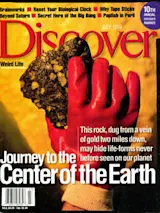Your gadgets aren't very smart. Telephones, stereos, microwaves—and most of all, personal computers—need individual operating instructions to do their jobs. These mindless household servants coexist but never coordinate their chores. All told, it's an inefficient life.
And it's about to change.
The person who plans to connect those gadgets is Bill Joy, cofounder and chief scientist at Sun Microsystems. Joy is the leading force behind Jini, the new software that lets digital devices, from computers and cell phones to the unknown appliances of tomorrow, communicate via a wireless network. The idea, Joy says, is what technologists call distributed computing: transferring power from the perplexing lone PC to a team of appliances at home, at work, or even in the car. "Devices much simpler than PCs are possible," Joy says, "and just in time, before we all go crazy."
Jini connects compatible appliances to a network using Java, Sun's widely used ...














